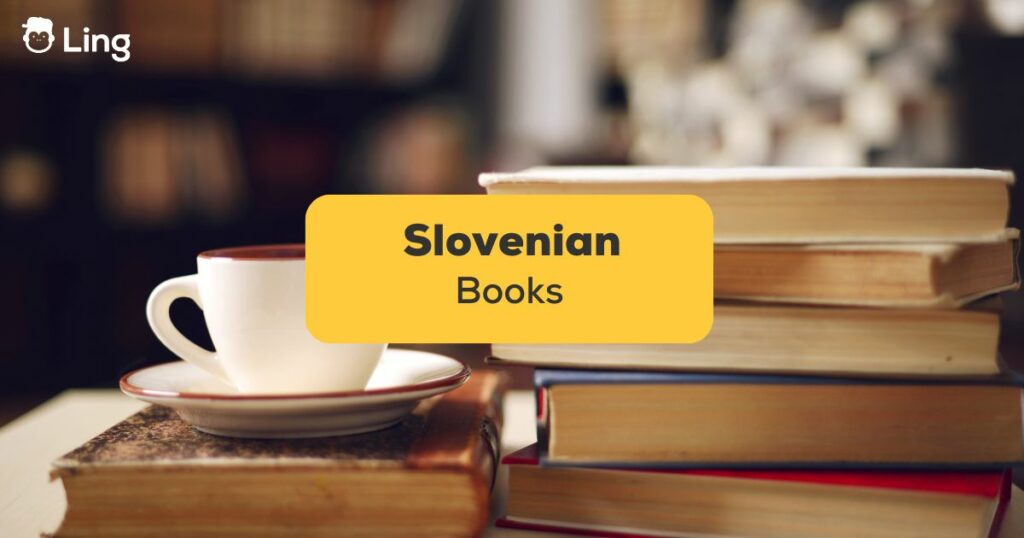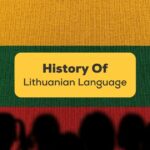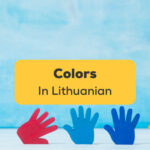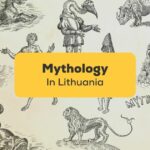Hey there, bookworms! Looking to explore some stories found in Slovenian books? You’ve come to the right place.
In this post, we’ll go through timeless classics and modern tales, along with some basic vocabulary. We’ll discuss the perfect selections for Slovenian learners who are not only book lovers but also interested in the country, culture, history, and the Slovenian way of life. Let’s delve right in!
Table Of Contents
Best And Most Famous Slovenian Books
When it comes to Slovenian books, there’s a plethora of choices! Even though Slovenia is a small country, it has a very rich history and many authors that shaped its literary identity. It would be super difficult to go through all of the best books. That’s why I’ve prepared a list of some that are widely considered the best by Slovenian and foreign readers alike. Our list will include the following six works (in no particular order):
- Prežihov Voranc – Solzice
- Ivan Cankar – Moje Življenje
- Ciril Kosmač – Pomladni dan
- Drago Jančar – To Noč Sem Jo Videl
- Veronika Simonitti – Ivana Pred Morjem
- France Prešeren – Poezije
1. Prežihov Voranc – Solzice
I want to start this with a true classic that every Slovenian knows. Solzice is a collection of eleven sketch stories, mainly describing places or people. The stories were published in 1949 and dedicated to the author’s mother. The main themes are the author’s childhood and the hard life of the people at that time.
The author’s real name was Lovro Kuhar, but he published under the pseudonym Prežihov Voranc. The name of the title is also the name of a flower in Slovenian. Solzice basically means little tears, but the flower meant in the story is the Lily of the Valley.
In the first story of the book, which is also titled Solzice, he describes his days as a child, taking care of the family cows near a deep cave that was called pekel, or hell. He was very afraid of this place because it was dark and scary. However, there were flowers called Solzice that only grew there. One day, his mother expressed the wish to have some, so he bravely went into the cave on his own and brought back some to make his mother happy and overcome his fear.
Other stories in the book follow the themes of compassion, empathy, social inequality, family, hard work, loss, and grief.
2. Ivan Cankar – Moje Življenje
English title: My Life
Ivan Cankar is another prominent Slovenian author. Moje življenje is also a collection of sketch stories. He and his mother are the protagonists of the stories.
In the book, he portrays himself as a poor child who was forced to work from his childhood on. The older he gets, the more he starts to become independent and live his own life. Because of his immense love for his mother, Cankar put her in the center of the stories, expressing her self-sacrificial nature.
In one of the stories, called Skodelica kave (A cup of coffee), he reflects on the wrongs he has done to other people, which has hurt him and he’s regretted all his life. One of the things that he’s regretted immensely is what he did to his mother when he wanted a cup of coffee, even though he knew they didn’t even have enough for bread. When his mother brought him coffee, he viciously refused it, as he was busy.
These stories will show you the life of Slovenians in 1920, which is when the book was published.
3. Ciril Kosmač – Pomladni Dan
English title: A Day In Spring
Pomladni dan is a story of a young man’s return to his rural Slovenian home after the war. He’s thinking about his family, loss, and how war impacts individuals and relationships. He also thinks about his young life, education, societal pressures, family obligations, and political unrest of the time. The book is about a journey of personal growth and standing strong in tough times.
The book, published in 1950, is a perfect choice for those wanting to learn about war and post-war Slovenian times.

4. Drago Jančar – To Noč Sem Jo Videl
English title: I Saw Her That Night
A rather modern choice compared to the other ones, To noč sem jo videl is a novel by Slovenian writer Drago Jančar, published in 2010. It tells the story of Veronika Zarnik, a young woman from a wealthy family, through the perspectives of five different characters. Each narrator reveals more about Veronika’s life, showing how her past was shaped by love, war, and tragedy.
This is a great book for learning Slovenian because it has lots of modern vocabulary structures to learn, and it teaches about Slovenian culture. Plus, it’s an interesting story with different characters, so you get to see different ways people speak in Slovenian. Overall, it’s a fun and educational way to improve your Slovenian skills!
5. Veronika Simonitti – Ivana Pred Morjem
English title: Ivana Before The Sea
Ivana pred morjem is a touching story about family ties. It follows Ivana’s life, as told by her granddaughter. When the granddaughter returns to their family home on the Slovenian coast, she discovers old photos and letters that reveal Ivana’s past, including her struggles during wartime and her love for her husband, Adrijan.
The book explores the lives of three generations of the same family, showing how historical events affect them. There’s also a mystery surrounding someone from Ivana’s past.
For language learners, this book is great because it gives insight into Slovenian culture and history.
Veronika Simoniti, the author, is well-known for her short stories. People love her writing because it’s emotional and easy to connect with.
6. France Prešeren – Poezije
English title: Poems
As the last one, I wanted to add a book that doesn’t contain stories, but poems! I’ve decided to add France Prešeren, because he’s the most prominent Slovenian poet, who also wrote Slovenia’s national anthem, Zdravljica (a toast), which is included in the book.
The book was published all the way back in 1846, but it already had very powerful themes of love and the national identity of the Slovenian people, as well as human suffering and hope.
He was a true wordsmith, writing excellent poems, lyric poetry, and epic verses. His work shaped Slovenian culture and literature. Today, he’s a national symbol of Slovenian identity and cultural pride. His work is still studied and celebrated to this day. Basically, if you want to learn about Slovenian language, history, and culture, he’s your go-to guy to begin with!

How Do You Say Book In Slovenian?
The word for book in Slovenian is knjiga.
Slovenians will use this word for any type of reading material. Of course, similar to English, when referring to a novel, they will rather use the word roman, or any other specific term.
Slovenian Vocabulary Related To Books And Reading
Before you run off searching for some other fascinating Slovenian stories, I’ve prepared a list of Slovenian words for you. They will come in handy when you’re browsing Slovenian books or trying to find your way in a Slovenian library. This and much more is waiting for you if you decide to give the Ling app a try.
| English | Slovenian |
|---|---|
| Book | Knjiga |
| Reading | Branje |
| Male writer | Pisatelj |
| Female writer | Pisateljica |
| Novel | Roman |
| Poem | Pesem |
| Poetry | Pesništvo |
| Story | Zgodba |
| Autobiography | Avtobiografija |
| Biography | Biografija |
| Science fiction | Znanstvena fantastika |
| Fantasy | Fantazija |
| Fantasy novel | Fantazijski roman |
| Adventure | Pustolovščina |
| Literature | Literatura |
| Comic book | Strip |
| Publishing house | Založba |
| Library | Knjižnica/Biblioteka |
| Bookstore | Knjigarna |
| Title | Naslov |
| Author | Avtor |
| Borrowing | Izposoja |
| Male librarian | Knjižničar |
| Female librarian | Knjižničarka |
| Newspaper | Časopis |
| Magazine | Revija |
| Textbook | Učbenik |
| Bookworm | Knjižni molj |
| Page | Stran |
| Chapter | Poglavje |
| Content | Vsebina |
| Table of contents | Kazalo |
| Preface | Spremna beseda |
| Note | Opomba |
Frequently Asked Questions Related To Slovenian Books
What Was The First Book In Slovenian?
The first ever Slovenian books were written in 1550 by Primož Trubar. Catechism and Abecedarium were groundbreaking works in Slovenian literature and education. The Catechism explained Protestant beliefs in Slovenian, promoting religious learning in the native language rather than Latin.
Meanwhile, the Abecedarium was a basic reading and writing book that helped Slovenian speakers learn to read and write and established a standard language. Through these works, Primož Trubar truly influenced Slovenian culture and language, setting the stage for Slovenian literature and education, adding a lot of value to this section of Slovenian media!
How Old Is The Slovenian Language?
The Slovenian language’s earliest written examples are found in the Freising manuscripts, also known as Brižinski spomeniki. They date back to between 972 and 1039, probably before the year 1000. These manuscripts contain Slovenian religious texts and are important because they show us how Slovenian was written over a thousand years ago, giving us clues about the early stages of the language.
What Kind Of Language Is Slovenian?
Slovenian is a South Slavic language. It’s spoken mainly in Slovenia, a country in Europe. It’s similar to other Slavic languages, such as Croatian and Serbian. Slovenian uses the Latin alphabet, like English, but with some extra marks on certain letters.

Wrapping Up
I hope you enjoyed this journey through Slovenian history and literature. If you’re an avid Slovenian learner, I truly advise you to check out some of the books we presented to you today. Don’t worry if you’re not proficient yet – it will be an awesome way to add some extra words to your vocabulary and learn more about this small but stunning country.



































































